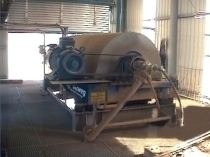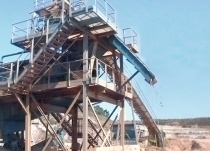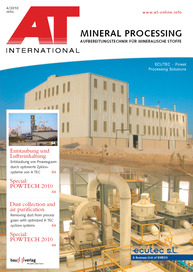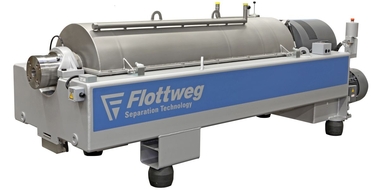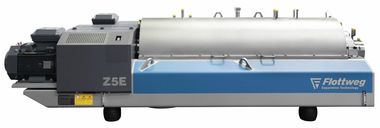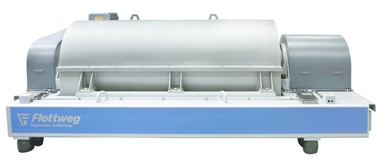Reducing the fresh water consumption
More than 8 bn tons of sand and gravel are needed and used for concrete, highway, and railway construction as well as for masonry mortar, plaster, floor pavement and lime. The building industry’s constant need of sand and gravel results in a regular demand of increased gravel mining surfaces. Therefore, more and more frequently the question arises as to how gravel could be quarried in an environmentally sound way by means of modern technologies.
The raw material is generally mined step by step using loaders and diggers and is then transported to the quarry using trucks. Undesired components are removed in a separation station and the gravel is sieved and separated in different size groups. In order to clean and classify the different gravel fractions, a significant amount of water is needed. Remaining is a fine sediment which is usually pumped into lagoons or ponds. From there it has to be removed for delivery to for landfills using diggers or other construction vehicles. Since this is a very expensive and complicated way for gravel mining, mechanical separation technology using centrifuges became increasingly accepted, especially in quarries where a large quantity of gravel water with a high content of fine particles is generated.
For solid-liquid separation, the wash water is fed through a stationary pipe into the feed zone located in the center of the scroll. It is then accelerated circumferentially and delivered through distribution ports into the bowl. The scroll rotates at a slightly different speed than the bowl and conveys the deposited solids toward the conical end of the bowl. Dewatered solids are ejected through ports at the conical end of the bowl into the solids housing and fall through to the discharge chute. The clarified liquids flow to the cylindrical end of the bowl where they exit over weir plates. Easily adjustable precision weir plates allow for the precise adjustment of the pond depth in the bowl. Overflow is then collected in a centrate chamber, discharged by gravity, and reintroduced in the water circuit.
Wolkersdorf, a sand and gravel sales company, has been operating a process water treatment plant for several years using a Flottweg Decanter for dewatering the separated sludge (Fig. 1 and Fig. 2). The purpose of the new treatment plant was to drastically reduce the fresh and ground water consumption. A central component of the process water treatment plant is the dewatering of the washed sludge using a special Flottweg Decanter. Sludge is separated using different sieving devices and disc clarifiers and then flocculants are introduced. The sludge is continuously dewatered until it reaches 55 % of dry substance using a Flottweg decanter. Thus, the sludge is semisolid and therefore appropriate for storage and transport. Due to the high capacity and reliability of the Flottweg decanter, temporary storage of the sludge after the disc clarifier is not necessary.
By utilizing the water contained in the sludge, it is possible to dramatically reduce the consumption of fresh water. Thus, the new technology helps to significantly reduce operating costs. Moreover, the investment into the new system contributes to save our most important resource, water. In contrast to comparable filter technologies, the Flottweg Decanter stands out due to its continuous operation. Furthermore, the decision to install a Flottweg Decanter was taken due to low investment and installation costs. An intelligent monitoring system enables unsupervised operation, freeing the staff for other duties.
Flottweg AG, Vilsbiburg (D), Tel.: +49 8741 301-0,
www.flottweg.com

